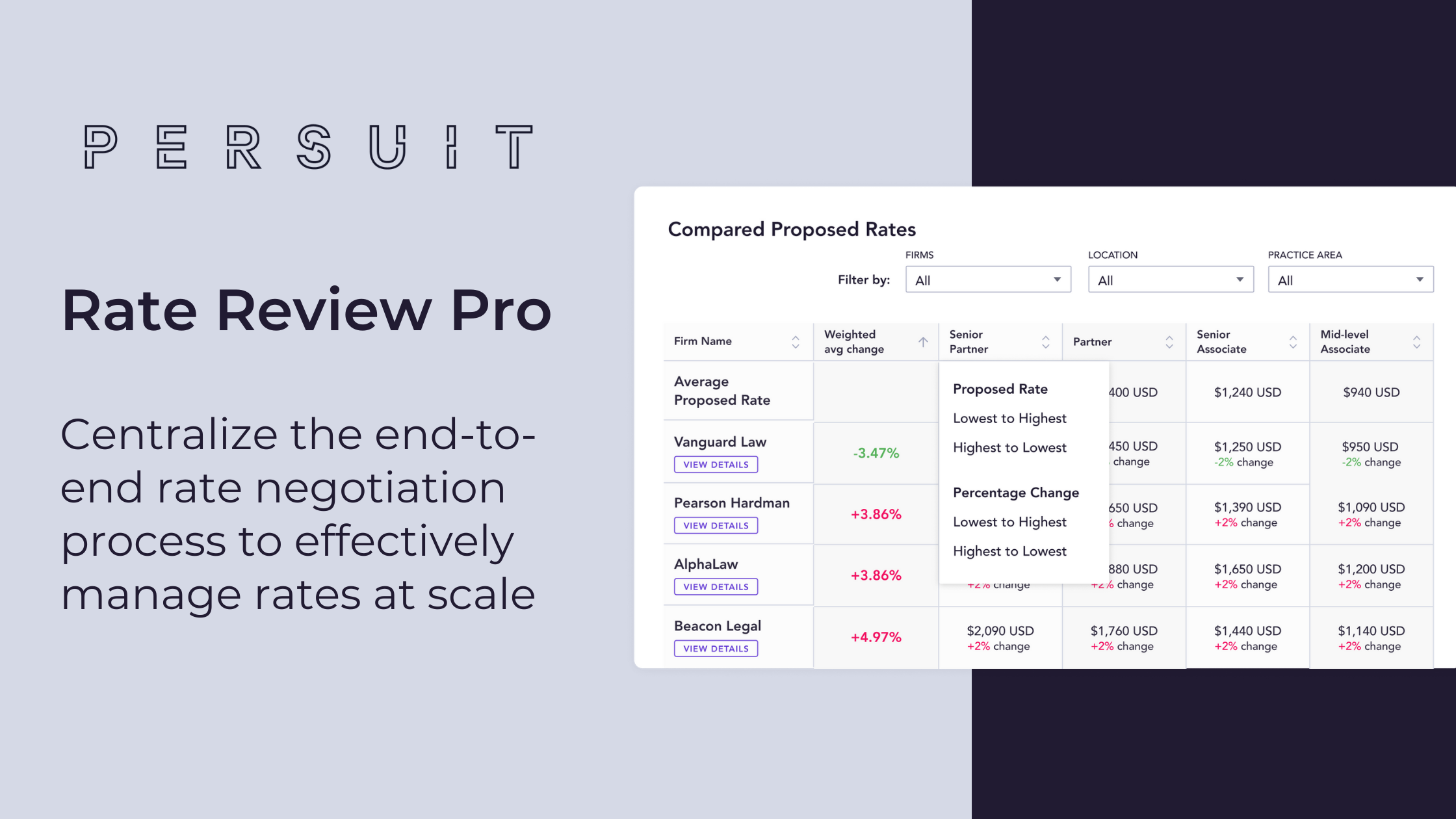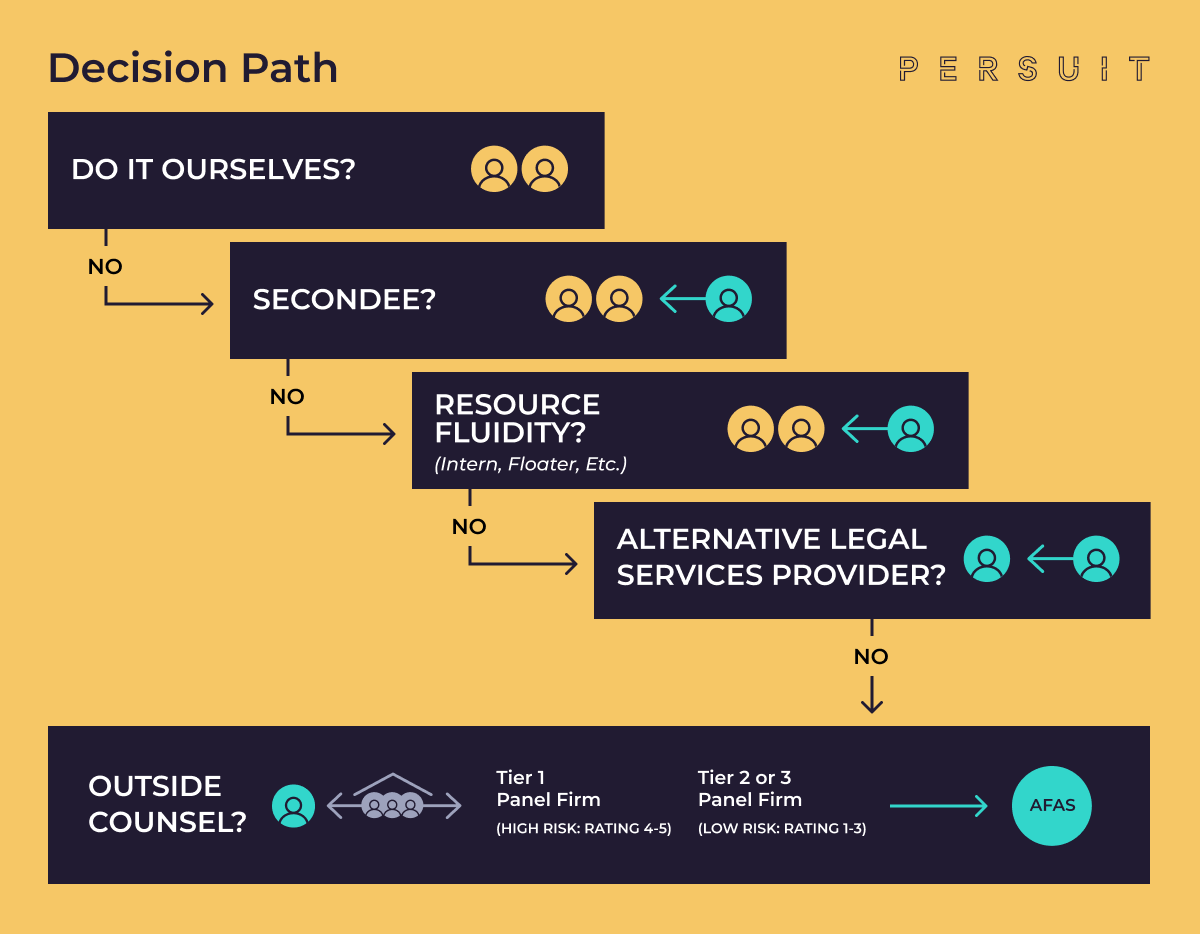
Setting Expectations:
“Blessed is he who expects nothing, for he shall never be disappointed.” These are the wise words of Alexander Pope, and they are certainly wise — but when the legal work you’re buying comes with a multi-million dollar price tag, you cannot help but to have a few expectations. Managing external legal counsel is best accomplished through managing expectations. Sometimes, in the middle of a matter or after a firm has exceeded scope or become unresponsive, defining and managing expectations has become too late. So one must make efforts to define and manage expectations before, during and after a case.
Define Your Expectations:
Define your expectations long before you bring on external counsel. Make sure your team is on the same page in regard to your matter, and make sure goals are consistent. If not, the law firm will receive mixed messages.
Be precise on defining the issue, the scope and the objectives of your matter. Use quantitative metrics whenever possible (e.g., “two expert witness testimonies,” “four depositions).
Expectation Setting in RFPs:
If this firm is unclear about your expectations, they’re unable to accurately provide bids on legal services. This uncertainty will trickle into your engagement and harm your matter objectives.
A precise RFP serves as your first establishment of expectations with your future external counsel provider. If a firm sees a well-defined expectation or set of expectations with an RFP, they can more accurately represent the cost of legal services. (No more being surprised by firms that overshot scope and drastically exceeded budget!) Consider using RFP templates so you don’t forget to include any phases, quantifications, alternative fee arrangements, etc.
Expectations in Engagement Letters:
Engagement letters are an opportunity to solidify your expectations and give your firm's direction on where to begin. If you used a strong RFP template, then translating your expectations into an engagement letter should be easy. If an RFP template was used, engagement letter terms will already be clearly defined and can be directly incorporated into your engagement letter. A few engagement letter tips:
- Include Your RFP as an Exhibit. This provides additional clarity to terms of which parties are agreeing. Attaching and referencing your RFP means less ambiguity, and less potential conflict regarding scope in the future.
- Include a Communication Schedule. In the engagement letter, define your agreed-upon communication schedule with your firm. For example, “Thursday at 3:00 PM, ET are reserved for a 20 minute call for case updates.” Make sure phone numbers and email addresses are appropriately listed for points of contact.
- Include a Fee Schedules. Use tables provided from your RFP template to clearly establish defined fees and when they should be sent as an invoice.
Expectations in Initial Client Meeting:
The first meeting is crucial. Reiterate your expectations that have been outlined in the RFP and engagement letter. Let your firm know that the RFP and engagement letter is more than an administrative formality, that you expect adherence to those documents. Reference your communication schedule and send calendar invites or automated reminders to prompt firm communications at regular intervals.
Setting Expectations Continuously:
Setting expectations isn’t a one-time activity. Your expectations will evolve with your matter, so be sure to clarify ambiguities, communicate changes and continue to set expectations throughout the duration of your matter.
Templates in Persuit:
Don’t know where to start with defining your expectations? Persuit’s robust RFP template library can help you figure out what your expectations are for your external counsel. Persuit has customizable templates so your company can precisely tailor your RFP to match your matter objectives. Persuit’s RFP templates can also be downloaded for easy translation into engagement letters.




